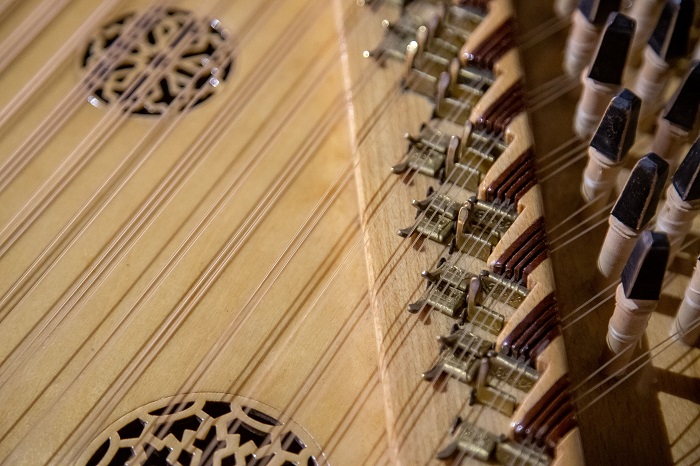Ancient Music Awakens in Le Mans
On January 26, 2024, a centuries-old melody echoed within the Saint-Julien Cathedral in Le Mans during the city’s biennial music festival. The occasion marked the first time in over seven hundred years that the shrill sound of the musical chessboard was heard by human ears. Though written traces and studies on this ancient instrument exist in Latin texts, its true form and sound were lost in history until now.
A New Life for the Enigmatic Instrument
The musical chessboard finds its mention amongst other instruments from the 14th century as “the English chessboard” in the works of Guillaume de Machaut, a composer and canon from Reims. Despite such mentions, very little was known about this enigmatic instrument prior to its recent revival at the hands of Maël Robichon, an ancient keyboard maker based at La Gacilly. Robichon vividly brought the instrument back to life through his intuitive craftsmanship during the Le Mans biennial sound festival, which spanned from January 20-28 and featured multiple celebrated musicians like Jean-Michel Jarre and Jeff Mills.
- The festival’s third edition saw electroacoustic musicians, sound designers, and many other performers come together.
- After witnessing the resurrection of the long-lost musical chessboard, speculations suggest its use remained steady across various kingdoms before it disappeared from the scene.
Medieval Iconography Deciphered
In order to reconstruct the musical chessboard, Robichon had to rely on the instrument’s iconographic representation. He explains, “We see, for example, angels playing it on their knees so we know it’s rather light. We see that it’s the size of two shoulders. From there, we deduce lengths, number of keys, pitch.” Working with such vague details, Robichon crafted a square box similar in size to a toy and brought forth a sound that had been unheard for centuries.
Solving the Puzzle of the Musical Chessboard
Robichon not only constructed the musical chessboard but also breathed life into its long-forgotten melodies within the framework of the Le Mans biennial festival. The instrument’s unique sound has intrigued both historians and musicians alike, as they now try to decipher the role it played during medieval times. Although further research and analysis are necessary to uncover more about this captivating lost treasure from history, Robichon’s contribution undoubtedly marks the beginning of an exciting journey into understanding the enigmatic instrument of the past – the musical chessboard.
A Talented Musician Brings Medieval Music Back to Life
As a pianist and double bass player trained at the Nantes conservatory, Maël Robichon is well known for his expertise in ancient lutherie. While reconstructing the clavicymbalum—a predecessor of the harpsichord—he relied on a detailed Latin manuscript by 15th-century scholar Henri Arnault de Zwolle. Being an organist himself, he embarked on recreating another ancient instrument, the musical chessboard, which in turn prompted the larger historical community to better understand the past through these culturally significant artifacts.
Rediscovering a Lost Art
The revival of the musical chessboard constitutes a fascinating leap forward in preserving and promoting our rich cultural heritage. Through talented artisans like Robichon and events like Le Mans’ biennial music festival, creative individuals worldwide will continue to breathe new life into the forgotten arts and cultures. This resurgence is vital in keeping history alive and introducing the beauty of ancient art forms to future generations.







